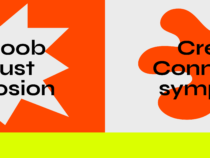Exhibited designs:
Anna von Maydell / Atelier für Kunstgewerbe, A.M. Luther furniture factory, J. Lorup glass factory, E. Taska workshop, Tarbeklaas, Standard, Estoplast, Kunst ja Kodu, Tallinna Ehituskeraamikatehas, Kunstitoodete Kombinaat, Punane Ret, Salvo, Ruum ja Vorm, Martin Pärn, Tarmo Luisk, Veiko Liis, Jaanus Orgusaar, Kärt Ojavee, Raili Keiv, Keha3, HUUM, Iseasi, Scheckmann, Kärt Põldmann, Marit Ilison, Warm North, Johanna Tammsalu, Monika Järg, Anton Koovit, Kelpman Textile, etc.
Curator: Kai Lobjakas, Estonian Museum of Applied Art and Design
On 29 September, an overview of the history of Estonian design curated by the Estonian Museum of Applied Art and Design will be opened in Tartmus. It concentrates on the most important aspects and trends in Estonian design. For Tartmus, this is the first overview of Estonian design. “Encounter Estonian Design. An Introduction” will remain open until 31 December 2016.
Over the last decades the various aspects and layers of Estonian design have been thoroughly researched. Design, like most other labels and ideas with a prolonged history, has been redefined to reflect the needs of any era. The rise of new meanings, however, has meant that understanding design has become harder and some of the newer definitions might not be compatible with the older ones. To some, “design” might mean a specific technical detail or an especially valuable chair, but others might define it as life altering innovation. This raises the questions: is design an object or a service, visible or invisible, a product, a unique item or an idea?
The spatial and temporal borders have also been changing. The history of design either begins with human civilization, with the industrialization period of the end of the 18th century, or with the years following the Second World War. All of these definitions, however, see design as a means of change – either for a group or an individual. It makes life easier, safer and happier.
Although Estonians have participated in the creation of many important design solutions – like the spy camera Minox or the communication platform Skype – our design has been historically associated with light industry and everyday life.
The Estonian Museum of Applied Art and Design has used the last 15 years to map the local design landscape and to place its history into context. With new information, the idea of Estonian cultural heritage has grown. The present exhibition is based on this research and connects the history of design with contemporary ideas. Using a selection of examples that have been considered the most prominent of their time, it contextualizes the Estonian design landscape and reveals the various aspects that are its most distinguishing characteristics.
An educational programme for various age groups will accompany the exhibition.
Exhibition graphic design: Indrek Sirkel
Exhibition design: Edina Dufala-Pärn. Containing exhibition modules by 3+1 designed for the 2006 Tallinn Applied Arts Triennial.
Exhibition team: Nele Ambos, Rael Artel, Karl Feigenbaum, Joanna Hoffmann, Margus Joonsalu, Sten Ojavee, Julia Polujanenkova, Kristel Sibul, Peeter Talvistu, Ago Teedema
Supporters: Cultural Endowment of Estonia, architectural office 3+1
Thanks: UBS Repro, Estonian Film Archives, AS Põltsamaa Felix


